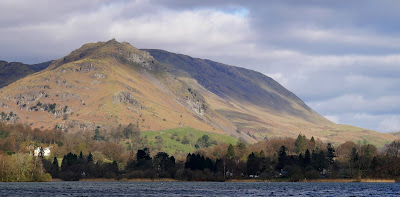A circular walk taking in Chirk Aqueduct, A stretch of the Llangollen Canal to the Pontcysyllte aqueduct and then cross country to Chirk Castle.
Chirk bank Aqueduct is a 70-foot (21 m) high and 710-foot (220 m) long navigable aqueduct designed by Thomas Telford that carries what is now the Llangollen Canal across the Ceiriog Valley near Chirk, on the England-Wales border, spanning the two countries. A railway viaduct runs alongside slightly higher to indicate the superiority of rail over water transport.
The Chirk tunnel It lies immediately northwards. It is 421 metres (460 yd) long and has a complete towpath inside. The tunnel is designed for a single standard narrowboat, so passing is not possible.
The Pontcysyllte Aqueduct is a navigable aqueduct that carries the Llangollen Canal across the River Dee in the Vale of Llangollen in north east Wales. The 18-arched stone and cast iron structure is for use by narrowboats and was completed in 1805 having taken ten years to design and build. It is the longest aqueduct in Great Britain and the highest canal aqueduct in the world.
Chirk castle was built in 1295 by Roger Mortimer de Chirk, uncle of Roger Mortimer, 1st Earl of March as part of King Edward I's chain of fortresses across the north of Wales. It guards the entrance to the Ceiriog Valley.
Following the travels of a 2011 Brazilian Volkswagen Type 2 camper van around the UK. Zoom in/out on the map to see where we have visited. Click on the marker to find the link direct to that page. I will be adding more and more of my locations from the last few years over the coming weeks.
Saturday 30 March 2019
Thursday 28 March 2019
Seathwaite (Borrowdale) & Seatoller
Seathwaite is the wettest inhabited place in England and receives around 3,552 millimetres (140 in) of rain per year. In September 1966 five inches of rain fell on Seathwaite and the surrounding fells in an hour.
Tuesday 26 March 2019
Grasmere, Rydal Caves, Rydal Hall
A walk around two lakes - Grasmere and Rydal water.
The Island in the middle of Grasmere Lake is known as "The Island".
Rydal cave is a former quarry working.
"The Grot" at Rydal falls in the grounds of Rydal Hall is described in William Wordsworth's early poem, "An Evening Walk", published in 1793. The poet moved to Rydal Mount, near Rydal Hall, in 1813 and it remained his home to his death in 1850.
The Island in the middle of Grasmere Lake is known as "The Island".
Rydal cave is a former quarry working.
"The Grot" at Rydal falls in the grounds of Rydal Hall is described in William Wordsworth's early poem, "An Evening Walk", published in 1793. The poet moved to Rydal Mount, near Rydal Hall, in 1813 and it remained his home to his death in 1850.
Subscribe to:
Posts (Atom)


























































